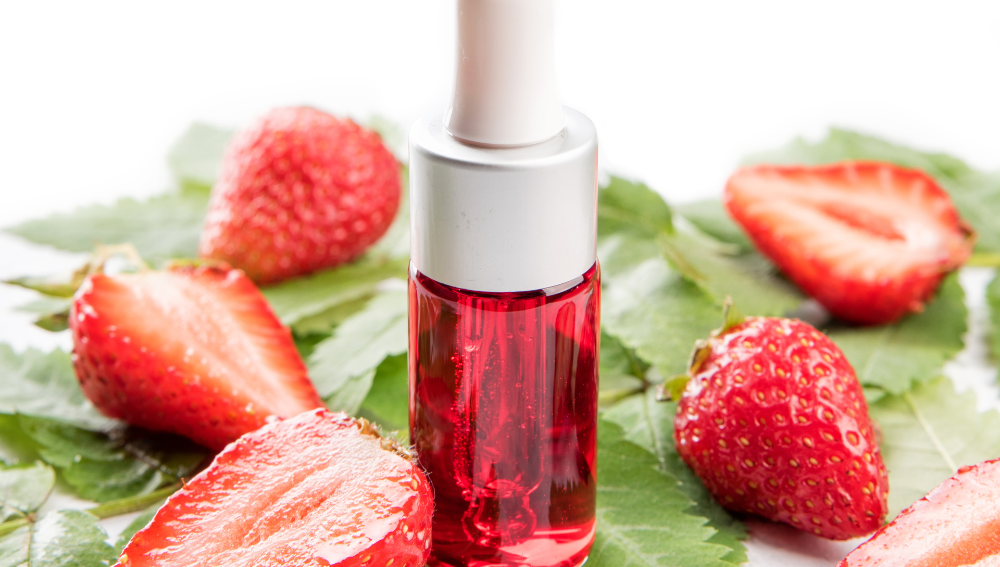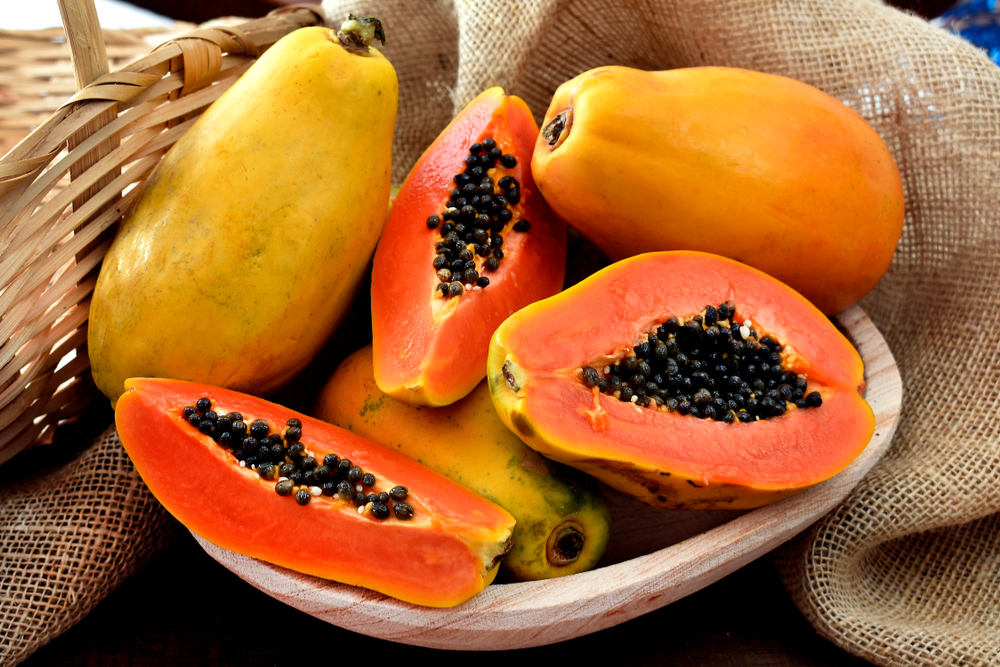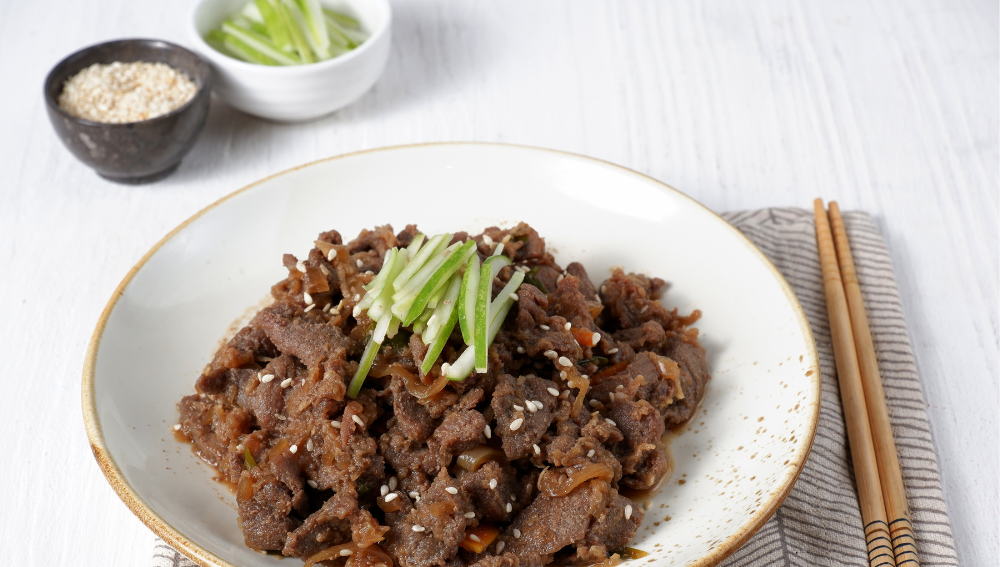I love trying new fruits, and one that has recently caught my attention is guava. Guava is a tropical fruit that is native to Central and South America, but is now grown in many other parts of the world.
One of the things that makes guava so intriguing is its unique taste.
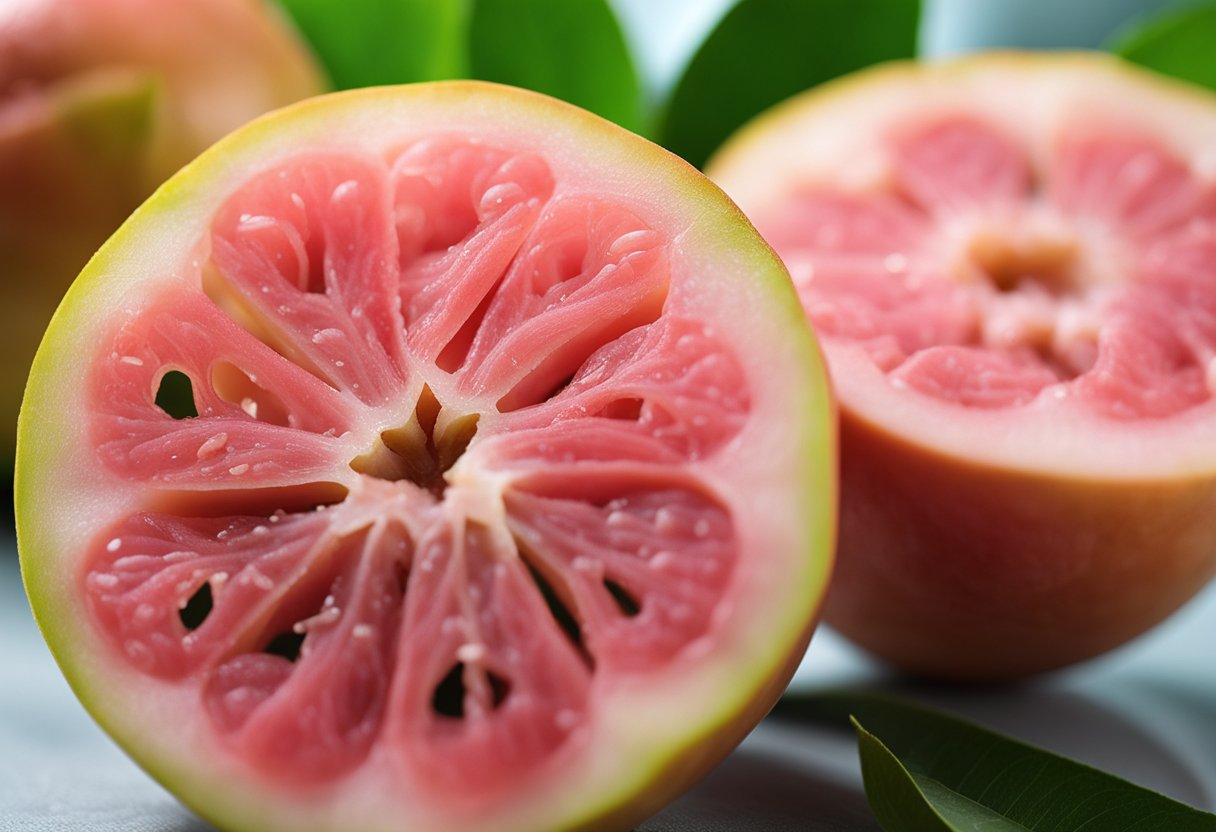
So, what does guava taste like? When ripe, guava has a sweet, musky flavor that is often described as a cross between a pear and a strawberry.
The flesh of the fruit is soft and juicy, with a grainy texture similar to that of a pear. The flavor of guava is also slightly tart, which adds a refreshing acidity to the sweetness.
Key Takeaways
- Guava has a unique sweet, musky flavor that is a cross between a pear and a strawberry.
- The texture of guava is soft and juicy, with a grainy texture similar to that of a pear.
- Guava has a slightly tart taste that adds a refreshing acidity to the sweetness.
Understanding the Taste of Guava
Taste Profile
Guava is a tropical fruit that has a unique taste profile. When ripe, it has a sweet, musky flavor that is often described as a cross between a pear and a strawberry.
The flesh of the fruit is soft and juicy, with a grainy texture similar to that of a pear. The flavor of guava is also slightly tart, which adds a refreshing acidity to the sweetness.
Sweetness and Sourness
The sweetness and sourness of guava can vary depending on the variety and ripeness of the fruit. Some varieties of guava are sweeter than others, while some are more tart.
The level of sweetness can be compared to that of an apple, while the tartness can be compared to that of a lemon. The balance of sweetness and sourness in guava makes it a versatile fruit that can be used in a variety of dishes.
Comparisons with Other Fruits
Guava is often compared to other fruits, such as pear, apple, and lemon. While it shares some similarities with these fruits, it has a unique flavor profile that sets it apart.
Compared to a pear, guava is sweeter and has a more pronounced musky flavor. Compared to an apple, guava is less crisp and has a softer texture. Compared to a lemon, guava is less tart and has a more complex flavor profile.
In summary, guava has a sweet, musky flavor with a slightly tart undertone. The sweetness and sourness can vary depending on the variety and ripeness of the fruit.
While it shares some similarities with other fruits, guava has a unique flavor profile that makes it a versatile and delicious fruit.
Varieties of Guava and Their Tastes
As a fruit lover, I can confidently say that guava is one of the most unique and flavorful fruits out there. Guava comes in various colors and flavors, and each variety has its own distinct taste.
In this section, I’ll explore the different varieties of guava and their tastes.
Yellow Guava
Yellow guava is a popular variety of guava that has a sweet and tangy taste. The flesh of the yellow guava is yellow, and the skin is green.
The texture of the fruit is smooth, and the flavor is mild. Yellow guava is a great source of vitamin C and dietary fiber. It is commonly used in smoothies, jams, and desserts.
Red Guava
Red guava has a unique taste that is both sweet and tart. The flesh of the red guava is pinkish-red, and the skin is green. The texture of the fruit is soft and juicy, and the flavor is strong.
Red guava is a great source of vitamin C, vitamin A, and dietary fiber. It is commonly used in juices, jams, and desserts.
Lemon Guava
Lemon guava is a small variety of guava that has a tangy and citrusy taste. The flesh of the lemon guava is white, and the skin is yellow. The texture of the fruit is firm, and the flavor is refreshing.
Lemon guava is a great source of vitamin C and dietary fiber. It is commonly used in salads, smoothies, and desserts.
Mexican Cream Guava
Mexican cream guava is a creamy and sweet variety of guava. The flesh of the Mexican cream guava is white, and the skin is green. The texture of the fruit is creamy, and the flavor is sweet and mild.
Mexican cream guava is a great source of vitamin C and dietary fiber. It is commonly used in smoothies, desserts, and as a topping for yogurt or oatmeal.
Red Malaysian Guava
Red Malaysian guava has a sweet and musky taste. The flesh of the Red Malaysian guava is pink, and the skin is red. The texture of the fruit is soft and juicy, and the flavor is strong.
Red Malaysian guava is a great source of vitamin C, vitamin A, and dietary fiber. It is commonly used in juices, jams, and desserts.
In conclusion, guava is a versatile fruit that comes in many varieties, each with its own unique taste. Whether you prefer a sweet and creamy flavor or a tangy and citrusy taste, there is a guava variety out there for you to enjoy.
Texture and Aroma of Guava
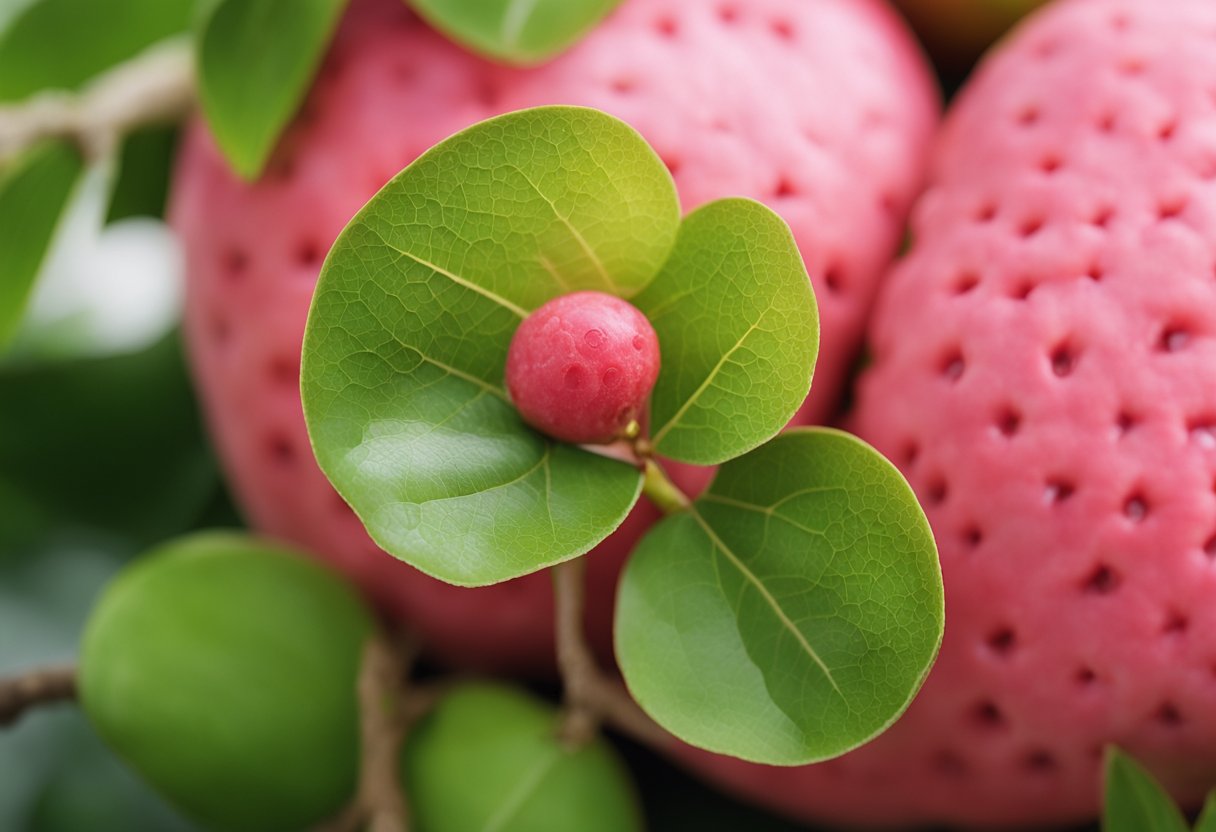
When it comes to the texture of guava, it can vary depending on the ripeness of the fruit. Generally, ripe guavas have a soft and juicy flesh with a grainy texture similar to that of a pear.
The skin of the guava is typically thin and edible, but some people prefer to peel it off before eating. The skin is smooth and can be green, yellow, or pink depending on the variety of guava.
In terms of aroma, guava has a unique fragrance that is often described as sweet and musky. The smell of guava can be quite strong, especially when the fruit is ripe. Some people even compare the aroma of guava to that of a tropical flower.
The scent of guava can be detected even before the fruit is cut open, making it a popular ingredient in perfumes and other fragrances.
When it comes to eating guava, the texture and aroma can greatly enhance the overall experience. The juicy flesh of the fruit combined with its sweet and musky fragrance can create a truly delightful taste sensation.
Additionally, the skin of the guava can add a slight bitterness to the flavor, which can balance out the sweetness of the fruit.
Overall, the texture and aroma of guava are unique and can greatly enhance the overall eating experience. Whether you prefer to eat the skin or peel it off, the soft and juicy flesh of the fruit combined with its sweet and musky fragrance make guava a popular choice for many people.
Health Benefits of Guava

Guava is a tropical fruit that is widely known for its unique taste and aroma. While it is delicious, it also offers several health benefits. Here are some of the health benefits of guava:
Nutritional Value
Guava is a nutrient-dense fruit that is packed with vitamins, minerals, and antioxidants. One cup of guava contains:
- 112 calories
- 4.9 grams of fiber
- 688 milligrams of potassium
- 377 milligrams of vitamin C
- 12% of the recommended daily intake of vitamin A
- 4% of the recommended daily intake of calcium
Health Impact
Heart Health
Guava has been linked to improved heart health due to its high levels of potassium and fiber. Potassium helps regulate blood pressure, which can reduce the risk of heart disease.
Additionally, the fiber in guava can help reduce cholesterol levels, which can also lower the risk of heart disease.
Blood Sugar Levels
Studies have shown that guava can help regulate blood sugar levels. The high levels of fiber in guava can slow down the absorption of sugar in the blood, which can help prevent spikes in blood sugar levels.
This makes guava a great fruit for people with diabetes.
Antioxidants
Guava is rich in antioxidants, which can help protect the body against damage from free radicals. Free radicals are unstable molecules that can damage cells and contribute to the development of diseases such as cancer and heart disease.
Vitamins
Guava is a great source of vitamins, including vitamin C and vitamin A. Vitamin C is important for the immune system and can help protect the body against infections. Vitamin A is important for vision and skin health.
Overall, guava is a delicious and healthy fruit that can provide several health benefits.
Culinary Uses of Guava
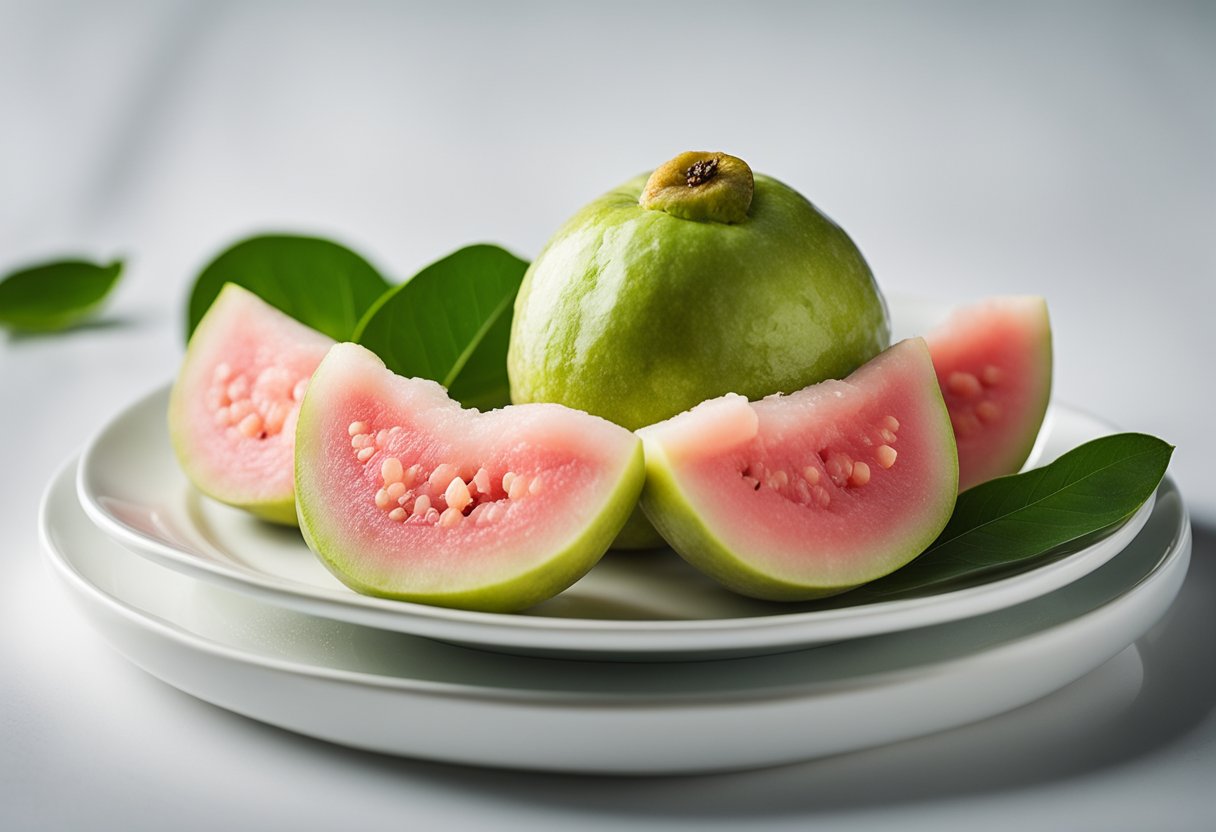
Guava is a versatile fruit that can be used in a variety of culinary applications. Here are some of the most popular ways to use guava in your cooking:
Guava in Beverages
Guava juice is a popular beverage that is enjoyed around the world. It is often mixed with other tropical fruits such as pineapple and mango to create refreshing cocktails and smoothies. Guava juice can also be used as a base for jellies, jams, and syrups.
Guava in Desserts
Guava is a delicious addition to desserts such as cakes, pies, and sundaes. Ripe guava can be sliced and served with ice cream or whipped cream for a simple yet elegant dessert.
Guava can also be used to make jams and jellies that can be spread on toast, crackers, and bagels. Guava jam is particularly delicious when paired with peanut butter.
Guava in Savory Dishes
Although guava is often used in sweet dishes, it can also be used in savory dishes to add a tropical twist. Guava pairs well with citrus and can be used to make a tangy marinade for chicken or fish.
Guava can also be used to make a delicious salsa that can be served with chips or used as a topping for grilled meats.
In conclusion, guava is a versatile fruit that can be used in a variety of culinary applications. Whether you are making a refreshing beverage, a sweet dessert, or a savory dish, guava is sure to add a tropical twist to your cooking.
How to Select and Store Guava
Choosing the Right Guava
When selecting guava, it is important to choose the right one to ensure that you get the best flavor and texture. Here are a few tips to help you choose the right guava:
- Look for ripe guavas that are fragrant and give slightly when pressed. Ripe guavas have a sweet aroma and are slightly soft to the touch.
- Check the color of the guava. Depending on the variety, ripe guavas can be yellow, green, or pink. Tropical yellow and tropical white guavas are usually yellow when ripe, while supermarket guavas are usually green when unripe and turn yellow when ripe.
- Avoid guavas that are too soft, bruised, or have brown spots. These are signs that the guava is overripe or damaged.
Storing Guava
Guavas can be stored at room temperature or in the fridge, depending on their ripeness. Here are a few tips to help you store guava:
- Wash the guavas before storing them to remove any dirt or debris.
- If the guavas are ripe, store them in the fridge in a paper bag or in the crisper drawer to keep them fresh for up to 5 days.
- If the guavas are unripe, store them at room temperature in a paper bag until they are ripe. This will help them ripen faster.
- Once the guavas are ripe, you can store them in the fridge to extend their shelf life for a few more days.
By following these tips, you can select and store guava properly to ensure that you get the best flavor and texture.
Origin and Distribution of Guava
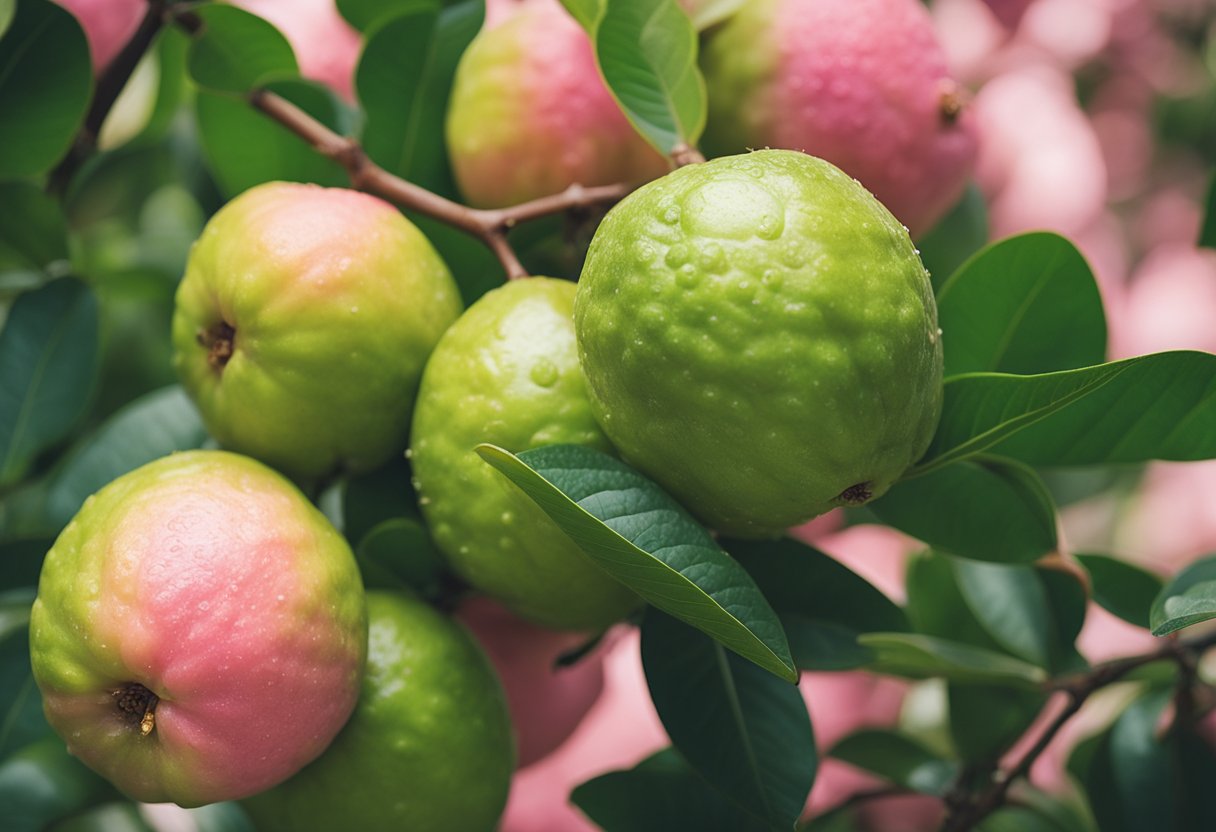
Guava is a tropical fruit that originated in Central America and Mexico. It belongs to the Myrtaceae family and is scientifically known as Psidium guajava.
The fruit is now widely grown in tropical and subtropical regions of the world, including Florida, Hawaii, India, and South America.
The archaeological record in Peru shows that guava cultivation started as early as 2500 BC. The fruit was then spread to other parts of Central America and Mexico.
Today, guava is widely cultivated in tropical and subtropical regions of the world, including the Caribbean, Africa, Asia, and South America.
Florida is one of the major producers of guava in the United States. The fruit is grown in both commercial and backyard settings. Hawaii is another state where guava is grown, but it is less common than in Florida.
In India, guava is a popular fruit that is grown in many parts of the country, including the states of Uttar Pradesh, Bihar, and Madhya Pradesh.
Guava is a fruit that thrives in tropical and subtropical climates. It needs a warm climate with moderate rainfall and well-drained soil.
The tree can grow up to 33 feet tall and produces small, round or oval-shaped fruits that are usually green when unripe and turn yellow or pink when ripe.
In conclusion, guava is a fruit that originated in Central America and Mexico and is now widely grown in tropical and subtropical regions of the world. It is a popular fruit that is enjoyed for its sweet, juicy flavor and many health benefits.
How to Eat Guava
Guava is a delicious tropical fruit that can be enjoyed in many ways. Here are some tips on how to eat guava:
Snack on it Fresh
The easiest way to eat guava is to simply slice it in half and scoop out the flesh with a spoon. The skin is edible, but some people find it tough and bitter.
If you prefer, you can peel the skin off with a knife or your fingers. Guava flesh is juicy and sweet, with a unique flavor that is often described as a cross between strawberries and pears.
Don’t Throw Away the Seeds
Guava seeds are edible and can be eaten along with the flesh. They are small and crunchy, with a mild flavor. If you don’t like the texture of the seeds, you can spit them out. Alternatively, you can blend the guava flesh and seeds together to make a smoothie.
Try it with Coconut
Coconut and guava are a perfect match. You can slice the guava and top it with shredded coconut for a quick and easy snack. Alternatively, you can blend guava and coconut milk together to make a creamy smoothie.
Freeze it for Later
If you have too much guava, you can freeze it for later. Simply slice the guava and remove the seeds, then place the slices in a single layer on a baking sheet and freeze until solid.
Once frozen, transfer the guava slices to a freezer bag or container and store in the freezer for up to 6 months.
Use it in Recipes
Guava can be used in a variety of recipes, from sweet to savory. Try adding sliced guava to a fruit salad, or use it to top pancakes or waffles.
You can also use guava to make jam, jelly, or chutney. For a savory dish, try adding guava to a salsa or marinade.
In conclusion, guava is a versatile fruit that can be enjoyed in many ways. Whether you snack on it fresh, blend it into a smoothie, or use it in a recipe, guava is sure to add a tropical twist to your meals.
Frequently Asked Questions

Where can I buy guava?
Guava can be found in most grocery stores and markets that sell tropical fruits. You can also find guava in Latin American and Asian grocery stores. If you are unable to find fresh guava, you can also find guava juice and guava paste in some stores.
What are the different types of guava?
There are several different types of guava, including the tropical pink, white, yellow, strawberry, and pineapple guava. The taste and texture of guava can vary depending on the type of guava and its ripeness.
What are some ways to eat guava?
Guava can be eaten raw, cooked, or used in a variety of recipes. You can eat guava by itself or add it to salads, smoothies, and desserts. Guava can also be used to make jams, jellies, and sauces.
Why do some people say guava tastes like vomit?
Some people may describe the taste of guava as similar to vomit due to a compound called butyric acid, which is also found in vomit. However, this is not a common experience and most people enjoy the taste of guava.
What are the benefits and side effects of guava?
Guava is a good source of vitamin C, fiber, and antioxidants. It may also have anti-inflammatory and antimicrobial properties. However, consuming too much guava may cause digestive issues such as diarrhea or constipation.
What fruits are similar in taste to guava?
Fruits that are similar in taste to guava include strawberries, pears, and passion fruit. However, guava has a unique flavor and aroma that cannot be replicated by any other fruit.


